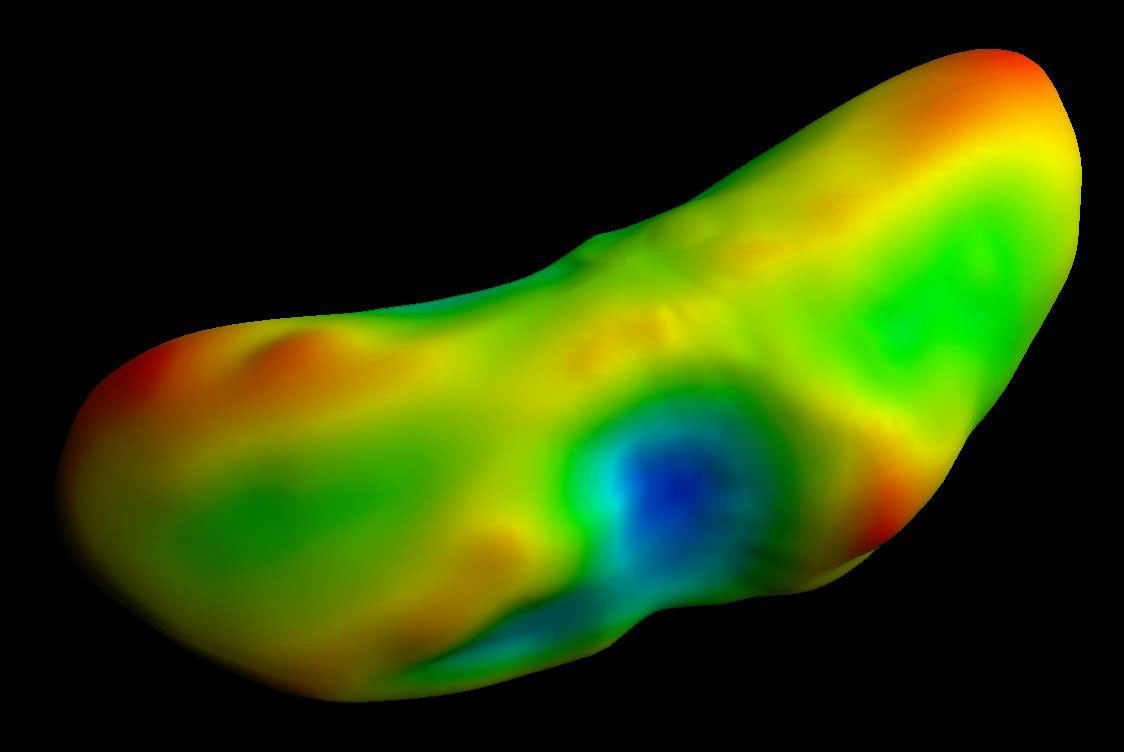Description
While NEAR Shoemaker does not directly measure gravity on Eros' surface, the spacecraft gathers other data that allow scientists to infer this measurement. Radio tracking has been analyzed to determine the asteroid's gravitational "pull" on the orbiting spacecraft. The many images of the asteroid, plus range measurements from the laser altimeter, measure the body's shape. Comparisons of the shape with the gravitational pull felt by the spacecraft from different parts of its orbit show that the density of the interior must be nearly uniform.
The asteroid's shape, density and spin combine to create a bizarre pattern of what is "uphill" and "downhill." In this view, a map of "gravitational topography" has been painted onto a shape model. Red areas are "uphill" and blue areas are "downhill." A ball dropped onto one of the red spots would try to roll across the nearest green area to the nearest blue area.
Built and managed by The Johns Hopkins University Applied Physics Laboratory, Laurel, Maryland, NEAR was the first spacecraft launched in NASA's Discovery Program of low-cost, small-scale planetary missions. See the NEAR web page at http://near.jhuapl.edu/ for more details.
































